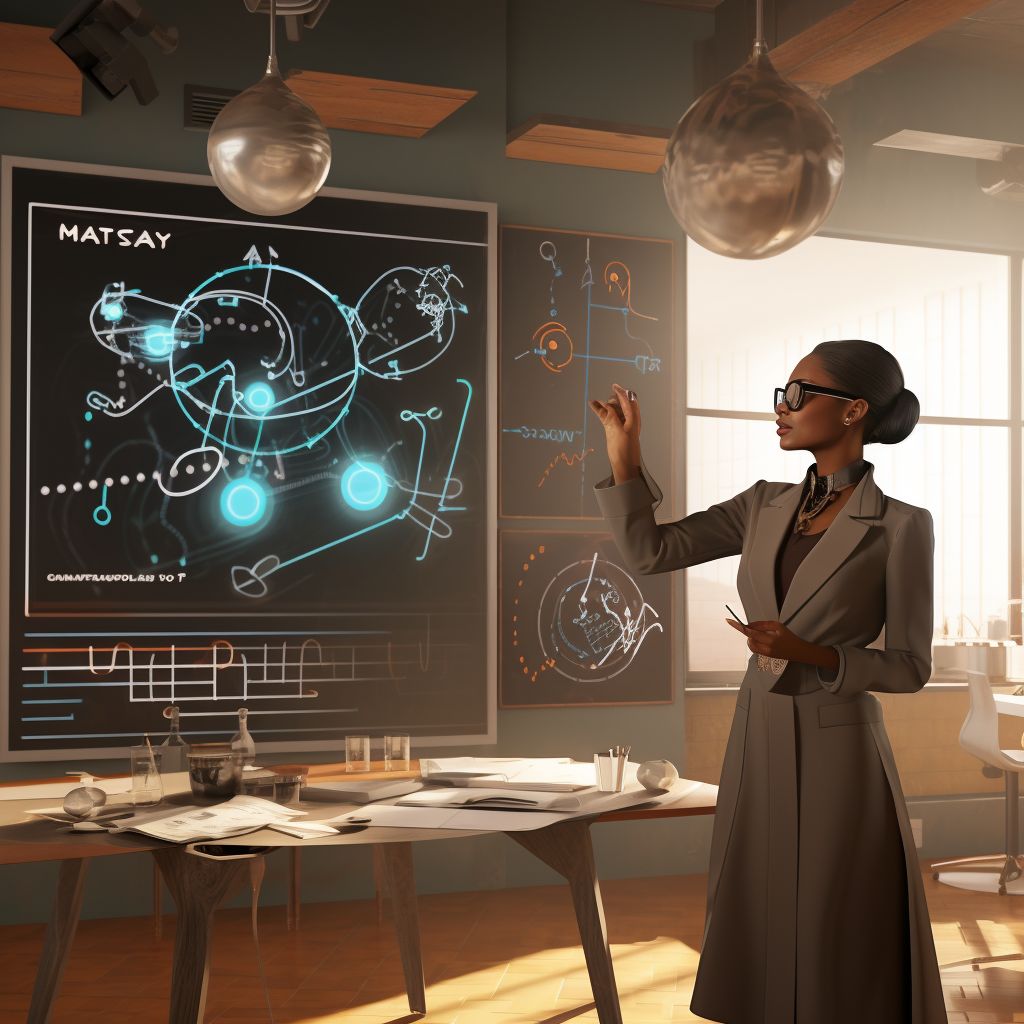Welcome, dear readers, to an enlightening journey as we dive deep into the world of learning, technology, and the potential of ChatGPT in reshaping how we acquire knowledge. You might have stumbled upon this post looking for a way to learn faster, boost personal productivity, or simply delve into personal development. Whatever your reason, I promise, by the end of this read, you’ll be enrolling in that Udemy course on ChatGPT, eager to explore more!
Let’s begin by debunking some age-old learning myths, many of which have deterred countless individuals from unlocking their full potential.

Myth 1: Learning Styles Are Fixed
For years, it’s been believed that people can only learn in one specific style – be it visual, auditory, or kinesthetic. However, with the rise of “AI for learning”, particularly the Generative Pre-trained Transformer (GPT-3), personalised learning experiences have emerged. ChatGPT in education is showing us that we can cater to multiple learning styles and adapt as we go.
Example: Meet Sarah, a high school teacher who always thought she was a purely visual learner. But when she started using ChatGPT for her professional development courses, she was surprised to find how engaging and effective auditory prompts could be. With AI’s adaptability, she discovered that her learning style was more fluid than she’d initially believed.

Myth 2: Practice Makes Perfect
We’ve all heard it: practice, practice, practice. But is it really the key to perfection? Modern tools like ChatGPT for learning have shown that it’s not just about repetition, but also about efficient learning. By integrating AI in our study routines, we can grasp concepts faster and in a more tailored manner.
Example: Tim, a college freshman, was struggling with calculus. He’d spend hours practicing problems but never seemed to improve. Only when he turned to ChatGPT for assistance, focusing on understanding rather than rote practice, did he see a noticeable difference in his grasp over the subject.

Myth 3: Multitasking Enhances Learning
The idea that juggling multiple tasks can boost our productivity is enticing. However, efficient learning with AI shows us the value of focused, dedicated sessions. When using ChatGPT as an assistant, you’ll realize that diving deep into one topic at a time yields better results.
Example: Alisha, a busy mom returning to school, tried to juggle her studies, baby care, and chores simultaneously. She believed multitasking was her only solution until she used ChatGPT. The AI assistant taught her the value of dedicated, focused sessions, helping her manage her time better and retain more information.

Myth 4: Intelligence is fixed and cannot be improved
One of the most groundbreaking achievements of the “language model for learning” is its testament that intelligence isn’t static. By leveraging “GPT-3 for learning” tools and methods, users continually prove that intelligence is malleable and can be enhanced.
Example: Carlos always believed he wasn’t “built” for languages. Yet, with the personalized approach of a “language model for learning” like GPT-3, he’s now fluently speaking his third language. This experience changed his mindset on intelligence and personal capability.

Myth 5: Memorization is the best way to learn
While rote learning has its place, ChatGPT in education has emphasized understanding over mere memorization. It’s about internalizing concepts, which leads to long-term success.
Example: Ria, an aspiring lawyer, was buried in piles of legal documents. She thought memorizing them was the key until ChatGPT helped her understand the underlying principles and connections. This not only eased her preparation but also made her more adept in her arguments.

Myth 6: Learning should be easy and effortless
Learning with technology, especially with ChatGPT, has made acquiring knowledge more accessible. However, challenges are part of the process. Embrace them as they come!
Example: Jay, an entrepreneur, wanted to understand digital marketing. Initially disheartened by the challenges, he almost gave up. However, by using ChatGPT, he embraced the difficulties, understanding that they were part of the learning curve, and eventually mastered the subject.

Myth 7: Technology cannot enhance learning
Well, if this post hasn’t debunked this myth already, consider the numerous success stories associated with “Efficient Learning with ChatGPT”. It’s clear that when combined with dedication and the right tools, technology can be a game-changer in personal development.
In conclusion, by integrating AI-powered tools like ChatGPT into your learning process, not only can you achieve personal success, but you’ll also be better equipped to adapt in this ever-evolving world. So, are you ready to maximize your learning potential? Dive in and let ChatGPT be your guide to efficient, technology-enhanced learning.
Example: Dr. Maya, a traditionalist, was skeptical about integrating technology into her history lectures. Yet, when she tried ChatGPT for a semester, she noticed her students were more engaged, participated more, and retained information better. She became a testament to the fact that technology, when used right, can transform education.

Eager to delve deeper into the world of ChatGPT and maximize your learning potential? Embark on a transformative journey with our highly recommended Udemy course:
ChatGPT: The Future of Learning and Personal Productivity
Don’t miss out on the future of efficient learning and personal productivity brought to you by this groundbreaking AI tool. For continuous updates, insights, and more, sign up for our newsletter. Also, don’t forget to explore our webpage for a plethora of resources designed just for you. Dive in, stay informed, and empower your learning journey!

